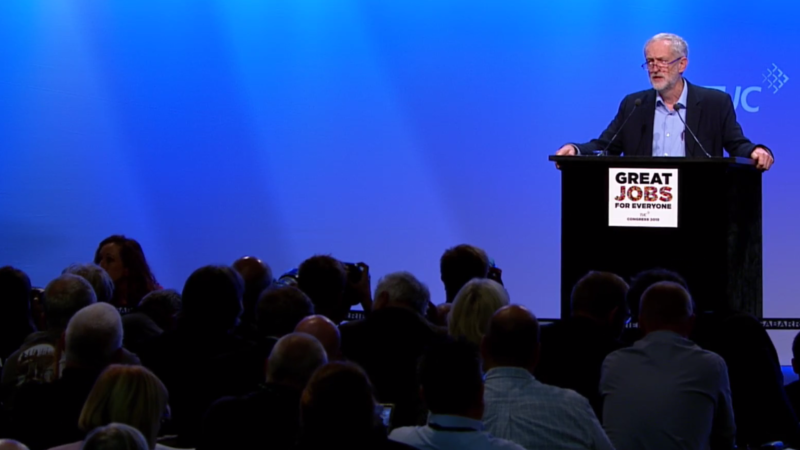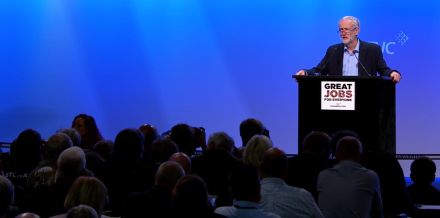

The different wings of the Labour Party have been so busy strategising about the internal affairs of the party that we haven’t even started to strategise about how to win the 2020 General Election.
My memory of this point in the last parliament was that the infamous debate about an ambitious 40% of the vote strategy versus the cautious 35% strategy that was adopted was already bubbling under.
This time round we’ve had a summer of strategising about how to win the leadership, or more accurately how to prevent a Corbyn victory if you didn’t want one; followed by an autumn of strategising about how to consolidate victory and drive forward a radical change in the party if you are a Corbyn supporter; or how to get rid of him or at least stop him changing too much if you are a Corbyn-phobe; or how to make a messy impasse between a leader and PLP who disagree on many fundamental issues work without tearing the party apart if you are somewhere in the middle, or just a professional staffer with a job to do.
There was a hint of an alternative electoral strategy during Corbyn’s campaign – the idea that conventional appeals to swing voters could be blown away by a revivalist leftwing leader and party galvanising Labour’s core voters, pulling back into the fold left defectors to the SNP and Greens (and working class defectors to UKIP?), and above all through a combination of political excitement and a bigger campaigning membership dramatically increasing turnout, so the disillusioned groups of voters who switched off when turnout collapsed between 1997 and 2001 would start voting (and voting Labour) again.
But since Jeremy’s election there has been so much noise about Syria, and Trident, and reshuffles, and reselections, and Momentum, that I haven’t heard any articulation of what the game plan is for winning in 2020.
I just had to Google who was in charge of the Labour Party’s strategy because I genuinely hadn’t heard anyone described as doing that job in the way Douglas Alexander and Spencer Livermore did before 2015.
It turns out it is none other than Seumas Milne. But it isn’t even a standalone job. Comrade Milne is “Executive Director of Strategy and Communications”. Understandably given this double role, he appears to be focussed on the half of it which he has some qualification for as a long-time journalist, i.e. Communications, particularly briefing his former journalistic colleagues against various Shadow Cabinet members. Presumably he also sees part of the role as being Commissar for Ideological Purity. But as for Strategy, it doesn’t seem to get a look in, perhaps unsurprisingly as Seumas doesn’t bring much to the table in terms of experience of election planning.
The latest analysis by Lewis Baston throws into stark relief the need to develop and start implementing a bold electoral strategy.
Baston reveals that barring some miraculous Labour recovery in Scotland, the forthcoming boundary changes mean we need a popular vote win in England similar to 1997 just to get a narrow overall parliamentary majority.
That makes the previous debate about a 35% versus a 40% strategy utterly redundant.
The only way to win a majority is to get a swing Baston describes as “not far short of 10 per cent”, putting us on above 40% of the vote, and picking up a critical group of 30 long-shot seats which “either have to come from the SNP or from running up big gains against the Conservatives including some seats Labour has never won before: Basingstoke, Portsmouth South and Canterbury.”
A 40% strategy is the only game in town.
The strategic debate is therefore about how to find the additional 10% of the electorate to take us from our 2015 total of 30.4% to over 40% (presuming of course that we can keep the 30.4% that we had in May – at the moment the polls say we have lost a good slice of them, cancelling out the new support enthused by Jeremy).
Both wings of the party need to set out their strategy for doing this.
We need to know from Seumas Milne who the demographic groups are that would build a new leftwing Corbyn 40% coalition. Unless the strategy is mapped out and based on hard numbers grounded in the data the party holds we won’t know which groups of voters (or previous non-voters) we need to be speaking to and winning over, both on the doorstep and in terms of national messaging and policies.
But the same goes for the other wing of the party. If we don’t believe this new leftwing coalition is an achievable route to 40% we have to be ready to explain how we would get there. Which groups of voters would we be seeking to win over (the obvious answer is winning back former Labour voters who are now Tory and UKIP but who are these people in terms of social class and other demographics) and what would be the kind of policies and indeed political leaders be that would appeal to them? How can we do this and stay true to our core values as a party?
For either wing of the party, what do we need to say and do to gain Basingstoke, Portsmouth South and Canterbury?
We have to be able to answer this because if Jeremy doesn’t turn out to be capable of assembling a 40% coalition we on the other wing of the party might find ourselves having to try to do it at short notice, and if we were to do that and fail, the party would most likely repeat the current experiment a second time after 2020.
The answers for either the left or the right of the party will not be easy.
But at the moment none of us have even started reading the exam question.




More from LabourList
‘Britain must keep its foot on the EV accelerator’
Explained: How could Unison disaffiliate from Labour?
‘Andrea Egan’s Unison win will reshape Labour’s internal politics – we just don’t yet know how’